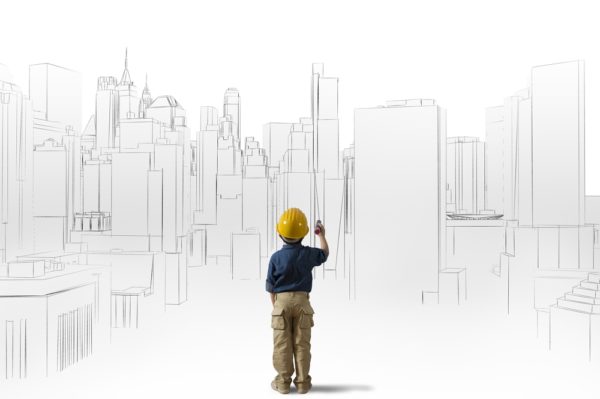Think about the jobs in today’s economy — the ones we’re supposed to prepare students for after graduation. Are employees evaluated using bubble-in tests to prove they know the ins and outs of their job? Do they learn and use new skills one at a time in a vacuum? The questions sound a bit silly until you realize too often that’s what students take away from their education. Why is the culture to drill facts into students’ heads just to pass a test?
Just like in the real world, my students show what they can do through projects, teamwork, and research. Is it working? Well, according to state science exams, my students consistently score higher than other science classes in my district.
I’ve never been a big believer in teaching to a test. Indeed, since my first year in the classroom I’ve used a project-based model with my science and social studies classes. On the first day of school I issue my fifth-graders a PASSPORT (which stands for Preparing All Students for Success by Participating in an Ongoing Real-world simulation using Technology) and explain that their yearlong adventure to “Johnsonville [1]” starts today. The school year is a simulation of adulthood where students work, create, and learn about personal finance and entrepreneurial skills. They experience real-world situations and gain insights into global affairs. Students tend to view my classroom less as a “classroom” and more of an interactive city where all projects intertwine to create an ecosystem of businesses and homes.
Each student has the opportunity to become an entrepreneur, politician, banker, and more. They are given $1,000 in Johnsonville cash to begin their lives. Students must buy a house or rent an apartment, earn wages, and manage their finances. As the children buy and sell items I donate, they learn math skills along with life lessons.
As they would in a real business, they manage a database of their clients or suppliers, create advertising plans, and track their income to ensure they are making a profit. Students even learn different levels of government and hold elections for positions of power, including president and city council. Students can also earn extra money through academic achievements and good behavior.
Here are a few reasons I believe this model works so well with students.
- Project-based learning is relevant to students. In Johnsonville, students explore issues like buying a home, paying rent, starting a business, and managing finances. Students see adults face these same issues and can relate what happens in Johnsonville to the real world. Relevancy makes each lesson memorable, meaning students are more likely to remember the overall concept of a lesson as opposed to memorizing facts for a test.
- It encourages collaboration. Desks are designed for individual students—which is why I don’t have any. In my classroom you will only find tables, collaboration bars, and sofas that are perfect places for students to think creatively and problem-solve. It is important that students take an active part in their own learning and are able to solve problems using what they know and have learned. By using critical thinking skills to collaborate and complete performance-based lessons, my students are fully engaged throughout the entire school year.
- Students are in control. Other teachers trying PBL often tell me, “my kids can’t do it” or “it’s a lot of work.” I think the real issue here is teachers not wanting to give up control of their classrooms. PBL gives me the freedom to facilitate and encourage critical thinking. Additionally, I find students work better when the teacher isn’t hovering over them. PBL promotes students to think creatively and build the 21st-century skills they need to be successful in today’s job market.
- Students are using pre-built, credible, standards-aligned curriculum. I have discovered Defined STEM [2] is a great tool to help me create relevant lessons I can incorporate into Johnsonville. The supplementary curriculum provides students with research resources, videos, and project prompts that encourage students to think outside the box and put them in real-world situations.
On test scores
The state of North Carolina does not test students on collaboration and citizenship, but does consider critical thinking a key ability. I’ve discovered the best way to test student’s critical thinking skills is through project-based learning. In addition to working in the realm of Johnsonville, students complete at least one project a month to show what they’ve learned in a real-world situation.
North Carolina State testing shows [3] that my PBL model improves student scores. At the end of the 2016 school year, my fifth-grade students scored an average of 85 percent on the state science exam, while my school as a whole scored 58 percent. It’s not a leap to suggest the focus on PBL and hands-on learning was the catalyst for this major boost.
It’s important to remember that every child is different and learns differently. Relating classroom lessons to real life helps students at any level connect with the content and interpret it in a way they are able to understand. When students become part of their own learning, they take pride in their education and become more engaged. PBL not only keeps students busy, but it allows each one to show what they’ve learned in a creative, supportive, and collaborative environment.
